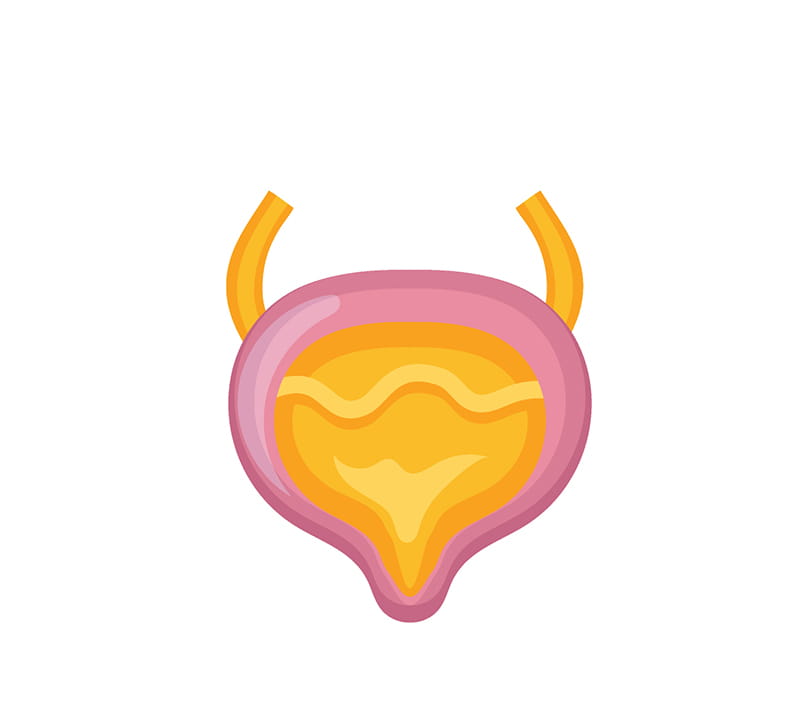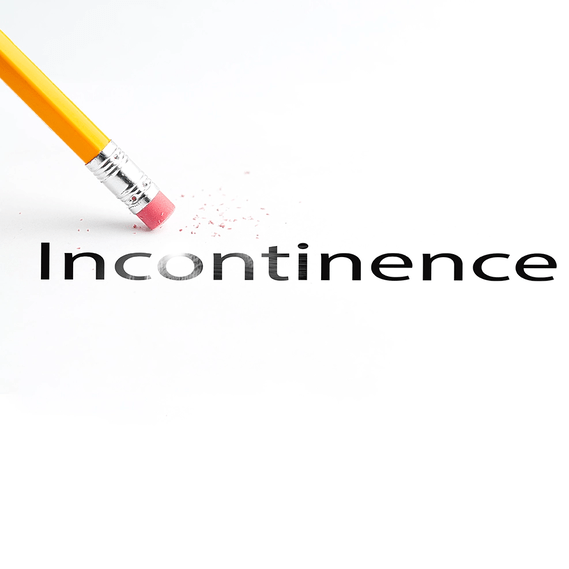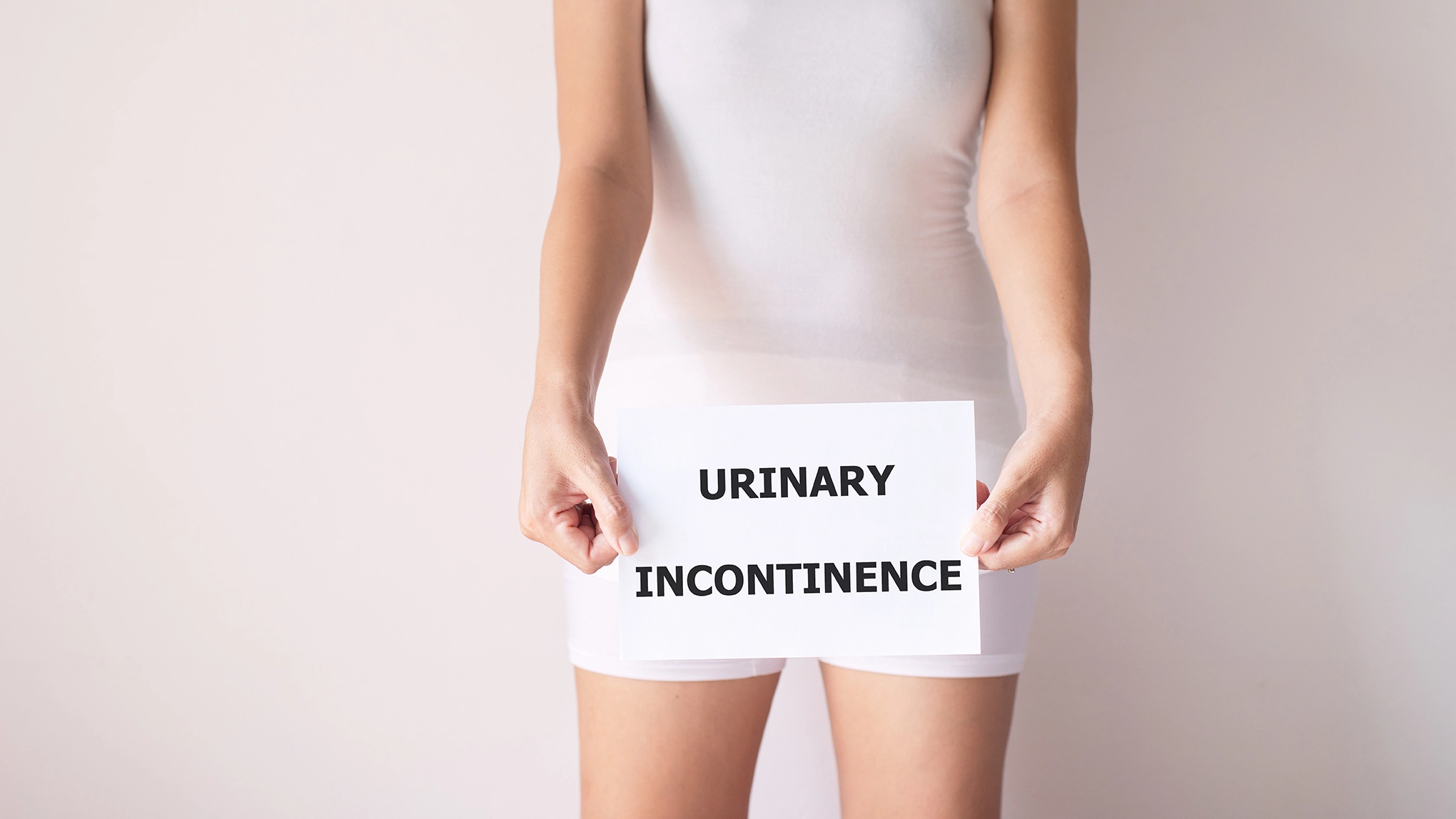AUA 2025: Bladder Diseases: Obstructive diseases, Chronic Pelvic Pain and UTI
John Duckett Memorial Lecture: Obstructive Bladder Disease
Speaker - Dr Rosalyn M. Adam
Overview of Obstructive Bladder Disease and Therapeutic Gaps:
Obstructive bladder disease as a condition has limited treatment options specially when associated with functional obstruction that is followed by spinal cord injury or disease. Though catheterisation and medications such as anticholinergics provide symptomatic relief yet they do not effectively target the underlying fibrotic remodelling of the bladder.
Molecular Profiling Challenges in Benign Urology and Rodent Model to Investigate Neurogenic Bladder Pathophysiology:
The application of high-throughput molecular profiling in benign urology, specifically obstructive uropathy was described as challenging due to infrequent collection of bladder tissue, mixed clinical phenotypes, and limited reference datasets. This was said to have hindered molecular understanding and therapeutic development for conditions like neurogenic bladder. In order to address these limitations a rodent model that involved mid-thoracic spinal cord transection and replication of features of human neurogenic bladder was utilised. Key pathophysiological elements in the model included:
- Neurogenic detrusor overactivity (NDO)
- Bladder wall hypertrophy and hyperplasia
- Extracellular matrix deposition
The model served as a foundation to explore disease mechanisms and evaluate novel interventions.
Inosine as a Therapeutic Agent:
Inosine which is a pure nucleoside with known antioxidant and neuroprotective properties was focussed on. Building upon the prior work of Dr. Larry Benowitz, the therapeutic potential of inosine was tested in spinal cord injury rats and the key findings included the following:
- There was significant reduction in NDO in inosine-treated rats compared to controls
- It was efficient even when treatment was initiated two months post-injury, which suggested utility in established disease states.
Molecular Insights via Omics and Causal Network Analysis:
Causal network analysis and omics techniques (RNA sequencing and proteomics) were employed to characterise the molecular alterations in the bladder. Key results were as follows:
|
Observation |
Effect in Injured Bladder |
Reversal with Inosine |
|
Endogenous inosine levels |
↓ Decreased |
↑ Restored |
|
Oxidative stress |
↑ Increased |
↓ Reduced |
|
PARP activity (via poly ADP ribose) |
↑ Increased |
↓ Reduced |
|
DNA damage markers (γ-H2AX) |
↑ Increased |
↓ Reduced |
Further mechanistic insight was provided through the identification of elevated purine nucleoside phosphorylase (PNP) levels. PNP is an enzyme that converts inosine into hypoxanthine which is a compound implicated in oxidative damage. Therefore, downregulation of inosine and upregulation of hypoxanthine were associated with bladder deterioration.
Validation of Translational Relevance:
In order to determine whether molecular findings in rodents reflected human pathology, a urinary proteomic analysis was performed on paediatric patients with neurogenic bladder. The urinary proteome from these patients clustered closely with that of the rodent model which led to the validation of the model's translational relevance. Moreover, inosine-treated rats displayed reversal of injury-associated urinary protein changes, further supporting the treatment’s disease-modifying potential and further highlighting urine as a non-invasive biomarker source.
Conclusion:
The speaker concluded by stating that spinal cord injury induced obstructive bladder disease was associated with a cascade of biochemical disruptions which most notably included decreased inosine, increased oxidative stress, DNA damage, and PARP activity. All of these were mitigated by exogenous inosine administration which portrayed that these findings supported the concept of balancing uroprotective and urodamaging purines to preserve bladder health. Moreover, the ability to detect disease-related molecular signatures in urine opened avenues for developing non-invasive biomarkers for both disease progression and therapeutic response.
Chronic Pelvic Pain
Speaker- Dr. Henry Lai
Introduction:
Dr. Henry Lai and panelists presented the 2025 AUA Guideline on the diagnosis and treatment of male chronic pelvic pain (CPP) which introduced a paradigm shift in evaluation and management of chronic prostatitis/ chronic pelvic pain syndrome (CP/CPPS), chronic scrotal content pain (CSCP), and interstitial cystitis/bladder pain syndrome (IC/BPS) in men. An emphasis was placed on symptom-based classification, diagnostic precision, multimodal therapy, and the avoidance of antibiotic overuse.
Symptom-Based Classification:
The classification includes the following
- CP/CPPS (NIH category III): Pain in the pelvis or perineum without bladder-specific symptoms.
- IC/BPS: Pain associated with bladder filling and relief with voiding.
- CSCP: Localized pain in one testis without additional pelvic symptoms.
Assessment Tools:
The following assessment tools can be used to evaluate a patient with chronic pelvic pain:
- NIH-CPSI and GUPI (Genitourinary Pain Index) evaluates pain, urinary symptoms, and QoL.
- SHIM for sexual function;
- COSI for chronic orchialgia;
- SI-10 for LUTS.
Along with these tools a comprehensive review of systems is crucial to identify confusable or overlapping conditions (e.g., IBS, fibromyalgia, vertebral disc disease, hip pathology).
Physical Examination:
A detailed abdominal, pelvic, genital and neurologic examination is recommended. The digital rectal exam includes assessment for levator ani tenderness. Pelvic floor dysfunction is strongly associated with pain on ejaculation and perineal discomfort.
Investigations:
The following investigations can be performed to arrive at a diagnosis:
- Urinalysis and midstream urine culture to rule out UTI (required to exclude category II prostatitis).
- Two-glass test (pre- and post-prostatic massage cultures) rarely needed.
- PVR and urine flow may assist in evaluating voiding dysfunction.
Treatment Guidelines:
First-Line Management:
Empirical antibiotic use is discouraged in the absence of infection, which is emphasized as a central tenet of the updated guideline. Alpha-blockers may be considered for patients presenting with lower urinary tract symptoms (LUTS); although the evidence remains mixed, recent meta-analyses have offered support for their use. Non-steroidal anti-inflammatory drugs (NSAIDs) have been shown to be effective for short-term symptom relief, but caution is advised regarding their long-term use. Neuropathic agents, including tricyclic antidepressants (TCAs) such as amitriptyline at doses of 50 mg or higher, as well as gabapentin or pregabalin, may be employed—particularly in patients with widespread pain or those identified with a nociplastic pain phenotype.
Adjunctive and Non-Pharmacologic Therapies:
A few adjunctive and non-pharmacologic therapies include the following
- Pelvic floor physical therapy: Manual myofascial release (internal and external) recommended in men with pelvic floor tenderness.
- Acupuncture: Supported by large RCTs and meta-analyses showing improvements in pain, urinary symptoms, and QoL; included in guidelines for the first time.
- Low-intensity Shockwave Therapy (Li-ESWT): Shown to improve NIH-CPSI scores, pain, and erectile function in small studies; promising but not yet widely available or FDA-approved.
Herbal Treatments:
Evidence supports modest benefit from saw palmetto, quercetin, and pollen extracts (e.g., Cernilton), with minimal side effects.
Chronic Scrotal Content Pain (CSCP)
The following can be used for Isolated: unilateral testicular pain:
- Diagnostic spermatic cord block: ≥50% pain relief predicts success with microsurgical denervation of the spermatic cord (MSCD).
- MSCD: Can be targeted to preserve fertility in younger men.
- Orchiectomy: It is reserved as a last resort; and use is discouraged due to irreversible loss of testis and questionable efficacy in neuropathic pain.
Guiding Principles:
- Repeated courses of antibiotics are discouraged since they are ineffective unless there is a confirmed infection. Use of opioids should be avoided since it is not effective for nociplastic or neuropathic pain.
- Referrals to pain management should be considered when needed. A shared decision making approach should be central to treatment planning, the treatment options should be aligned with patient preferences, goals and lifestyle limitations.
- Finally, a stepwise approach should be considered where one intervention is introduced at a time to gauge efficacy and avoid therapeutic ambiguity.
- The updated guidelines reflect a nuanced, multidisciplinary, and patient-centered approach to chronic pelvic pain, aiming to reduce unnecessary treatments and improve outcomes through better diagnosis and individualized therapy.
Challenging Cases in Recurrent Urinary Tract Infections
Speaker- Dr. Farzeen Firoozi, Dr. Henry Ocasio, Dr. Lenore Ackerman
Epidemiologic Context and Diagnostic Pitfalls:
The 2025 epidemiologic data projects a 66% increase in recurrent UTI cases, reaching 4.5 billion cases. The factors that are responsible for this include population aging, antibiotic resistance, limited microbiome integration in care protocols, and empiric antibiotic use spurred by telemedicine without culture confirmation. This increase in the global rise necessitates use of refined diagnostic methods to differentiate between true infections and mimicking conditions.
Case 1: A Postmenopausal Woman with Persistent Symptoms- presented by Dr. Farzeen Firoozi
A 75-year-old woman presented with classic UTI symptoms and notable vaginal atrophy but negative cultures. The case highlighted genitourinary syndrome of menopause (GSM) as an underdiagnosed contributor to UTI-like symptoms. GSM encompasses urinary urgency, frequency, dysuria, and vaginal burning due to estrogen deficiency. Data from the PROVISE study showed low public awareness and under-treatment with only 24% attributing symptoms to menopause. Local vaginal estrogen therapy demonstrated efficacy in reducing GSM symptoms and rUTIs, with the safety concerns being minimal even among breast cancer survivors, provided oncologic consultation occurs. ACOG supports its use with oncologist guidance.
Case 2: Negative Cultures with Persistent Symptoms- presented by Dr. Henry Ocasio
An 82-year-old woman presented with a history of r-UTI since 4 years and negative cultures. Traditional culture methods, based on 19th-century protocols, often miss biofilm-associated or low-abundance pathogens. He advocated for next-generation sequencing (NGS) and PCR as adjunct diagnostics in culture-negative but symptomatic patients. NGS is said to detect a broader range of organisms and resistance genes, providing actionable data within days. In his case, NGS revealed Klebsiella pneumoniae, further guiding targeted therapy. A comparative study showed significantly greater symptom score reduction with NGS-guided therapy versus culture-based treatment (8.5 vs. 3.7 points respectively), but caution is advised because of high sensitivity, potential overdiagnosis, and high cost.
Case 3: Confounding Diagnoses- presented by Dr. Lenore Ackerman
This presentation emphasized on the importance of thorough differential diagnosis. In two cases, patients labeled with rUTI had underlying pelvic floor myofascial pain and lichen sclerosus, respectively—these conditions mimic cystitis, but require distinct interventions like pelvic floor physical therapy or topical corticosteroids. A cited study found that only 6% of women presenting for rUTI evaluation had evidence of infection and 60% of women had pelvic floor dysfunction. Another concern was underdiagnosis of vulvar dermatologic conditions, with data that underestimates the prevalence of lichen sclerosus by two orders of magnitude when compared to biopsy studies.
Conclusion:
The need for a nuanced, multidisciplinary approach to rUTI diagnosis and management was emphasized by the panel. The key recommendations included the following:
- Consideration of genitourinary syndrome of menopause (GSM) was recommended, and initiation of local estrogen therapy was advised for postmenopausal women.
- Use of advanced diagnostics such as next-generation sequencing (NGS) was suggested in culture-negative symptomatic patients.
- Assessment for non-infectious causes, including pelvic floor dysfunction and dermatologic conditions, was advised.
- Reflexive antibiotic use without confirmatory evidence was discouraged.
- Resources from the AUA and Urology Care Foundation were recommended to be leveraged to enhance patient education.
Update on Antibiotic Stewardship
Speaker - Dr. Ann Gormley
The Rationale for Stewardship:
Antibiotic stewardship, a term coined in the 1990s and promoted by the Centers for Disease Control and Prevention (CDC) since 2014, aims to ensure antibiotics are prescribed only when clinically indicated, with correct drug selection, dosage, route, and duration. Over 252 million outpatient antibiotic prescriptions were dispensed in the U.S. in 2023—an estimated 28% of which were unnecessary.
This overuse fuels:
Antibiotic stewardship is a term that was coined in the 1900s and has been promoted by CDC since 2014. It aims to ensure that antibiotics should be prescribed only when they are clinically indicated with factors like drug selection, dosage, route and duration chosen correctly. Over 252 million outpatient antibiotic prescriptions were dispensed in the U.S. in 2023—an estimated 28% of which were unnecessary. This overuse leads to the following:
- Rising antimicrobial resistance, leading to 2.8 million resistant infections and 35,000 deaths each year in the U.S.
- Selection of harmful pathogens like difficile, especially with certain antibiotics like fluoroquinolones and cephalosporins.
- Increased healthcare costs, longer hospital stays, and fewer effective treatment options.
Stewardship Framework and Institutional Mandates:
The CDC's core elements for stewardship include:
- Commitment
- Accountability
- Pharmacy expertise
- Action (e.g., drug restriction, prior authorization)
- Tracking and reporting
- Education
Implementation is now mandatory for all U.S. healthcare systems receiving CMS funding or Joint Commission accreditation. Dartmouth Health’s program was discussed, which included annual e-learning, drug restriction protocols, and prospective audits with feedback to providers. Feedback directed at prescribers that often include interns has been shown to positively influence prescribing behaviours.
Challenges in Urology:
Urologists frequently encounter stewardship challenges like patients receiving unnecessary antibiotics from non-urologists along with diagnostic uncertainty that is experienced in recurrent UTI and post-procedure prophylaxis particularly in Post-stenting after septic stone interventions, transperineal prostate biopsies, where the necessity of prophylaxis is debated and managing fluoroquinolone resistance and tailoring prophylaxis based on rectal swab cultures.
Actionable Recommendations:
The urologists were urged to follow the following recommendations:
- Engage with institutional stewardship programs—contribute to guideline development and interdepartmental initiatives.
- Educate patients and trainees on when antibiotics are appropriate and the risks of overuse.
- Apply empiric therapy on prior cultures, antibiograms, and guidelines.
- De-escalate or discontinue antibiotics based on culture results.
- Discourage antibiotic stockpiling and self-medication, particularly in international travel.
Conclusion:
Antibiotic stewardship is recognized as an essential responsibility for all prescribers. Within urology, careful assessment of infection risk, appropriate antibiotic selection, and proactive involvement in both institutional and global initiatives to combat resistance are emphasized. Mindful prescribing, education, and systems-level engagement are considered vital tools in preserving antibiotic efficacy for future generations.
Genitourinary Syndrome of Menopause
Speaker- Dr. Melissa Kaufman
Definition and Prevalence:
Genitourinary Syndrome of Menopause (GSM) was formerly known under various terms such as atrophic vaginitis. It refers to a constellation of genitourinary symptoms associated with estrogen deficiency in menopausal women. It includes various symptoms like vaginal dryness, burning, irritation, dyspareunia, urinary urgency, recurrent UTIs, and incontinence. The prevalence of UTIs ranges widely (13–87%) due to underreporting and inconsistent terminology, with the risk increasing with age and among special populations, including breast cancer survivors, postpartum and lactating women, and those undergoing surgical oophorectomy or anti-estrogen therapy.
Diagnostic Approach:
Diagnosis of GSM is primarily clinical, based on patient-reported symptoms and corroborative findings on pelvic examination. Notable signs include thinning of vaginal epithelium, loss of rugae, erythema, labial resorption, and urethral caruncles. Medical providers are encouraged to perform pelvic exams to confirm diagnosis but must balance this with patient comfort and consent.
Core Management Strategies:
- Vaginal Estrogen Therapy:
The guideline strongly recommends low-dose local vaginal estrogen as first-line treatment for symptomatic GSM. Seven RCTs involving over 2,000 women demonstrated significant improvement in vaginal discomfort, dryness, and dyspareunia. Various formulations (creams, tablets, rings) are equally effective, with the choice tailored to patient preference and accessibility.
Importantly, a black box warning on all estrogen products—based on systemic hormone therapy risks—does not apply to vaginal estrogen. Clinicians must proactively address patient fears stemming from package inserts, particularly regarding cancer risk.
- Breast Cancer Considerations:
For women with a personal or family history of breast cancer, low-dose vaginal estrogen is not associated with increased incidence or recurrence of breast cancer, according to multiple large observational studies. Still, shared decision-making and coordination with oncology are essential, especially for those on or recently completing selective estrogen receptor modulators (SERMs) or aromatase inhibitors.
- Non-Hormonal Alternatives:
Moisturizers and lubricants (water-, oil-, or silicone-based) are recommended for patients preferring non-hormonal approaches, with RCTs supporting efficacy in alleviating vaginal dryness and dyspareunia.
- Energy-Based Therapies:
CO₂ lasers, radiofrequency ablation, and other “vaginal rejuvenation” technologies are not supported by current evidence. The FDA has issued warnings regarding potential harm, including burns and dyspareunia. The guideline recommends against these outside clinical trials.
- Recurrent UTIs and overactive bladder (OAB):
Low-dose vaginal estrogen is moderately recommended for preventing recurrent UTIs in postmenopausal women, with supportive data from RCTs and retrospective cohorts. In women with overlapping overactive bladder (OAB) symptoms, studies have shown parity or superiority of estrogen therapy compared to antimuscarinics (e.g., oxybutynin, tolterodine), offering a safer side-effect profile.
Counselling and Follow-Up:
GSM is a chronic, progressive condition. Symptoms may recur upon cessation of treatment which necessitates a long-term therapy and routine follow-up. Shared decision-making is critical, which should ensure alignment with patient values and preferences while also leveraging the best available evidence.
Key Takeaways:
GSM is a common, underdiagnosed condition that can significantly impact the quality of life of a patient. Local estrogen has proven to be safe and effective but is underutilized due to misperceptions. Non-hormonal options can be viable for certain populations, especially breast cancer survivors. Energy based devices lack sufficient evidence and are not currently recommended. The treatment must be individualized with ongoing monitoring and multidisciplinary collaboration whenever indicated.
Urethral Bulking 2025
Speaker- Dr. Benjamin Brucker
Epidemiology and Conceptual Evolution:
Stress Urinary Incontinence (SUI) affects nearly 45% of women, with half of these cases due to SUI, often exacerbated by obesity and parity. Historically, intrinsic sphincter deficiency (ISD) was seen as a prerequisite for bulking especially when retropubic suspensions have proven to be less effective in patients who had fixed urethras. However, new evidence shows that ISD and urethral mobility do not reliably predict bulking outcomes hence modern guidelines from AUA/SUFU, EAU, and others have accordingly removed ISD as a bulking criterion.
Materials and Mechanisms:
The landscape of bulking agents has seen to progress significantly—from early agents like paraffin and Teflon to today's safer and more durable compounds. Ideal agents are supposed to be hypoallergenic, biocompatible, and non-migratory. Two main categories exist:
- Homogenous gels- promotes collagen ingrowth e.g., polyacrylamide hydrogel which appears promising for its durability and improved safety profile.
- Microparticle-based agents- they induce a controlled inflammatory response e.g., calcium-based
Delivery Innovations:
Delivery systems have evolved from traditional cystoscopes to proprietary disposable devices designed for reproducibility and outpatient use. Transurethral approaches under local anesthesia are increasingly favored by patients (preferred by ~95%), with a clinical emphasis on repeat injections as part of long-term management.
Current and Future Perspectives:
Though clinical use is expanding—especially in older or frail patients, those with fixed urethras, or those desiring minimally invasive options, but the comparative data on technique, injection location (bladder neck vs. mid-urethra), and agent efficacy remain limited. Research into stem cell therapies for sphincter regeneration is ongoing but it is not yet ready for clinical application.
Sociopolitical factors, such as the FDA’s 2019 halt of transvaginal mesh, have led to a relative uptick in bulking procedures in the U.S. and similar shifts abroad, which includes Australia and the UK as well.
Patient-Centered Outcomes:
Despite the lower objective cure rates compared to slings, patient satisfaction with bulking still remains high. Shared decision-making is now emphasized, with data showing that up to 25% of women opt for bulking when presented with clear, comparative treatment options.
Conclusion:
Urethral bulking in 2025 is considered as a viable, low-morbidity treatment option for SUI. The success of urethral bulking hinges on thoughtful agent selection, clear patient counselling (especially around the need for repeat treatments), and continued clinical research. Further there is a need for randomized trials, real-world registries, and refined guidelines to optimize outcomes.
Optimal Evaluation of Complicated Male Lower Urinary Tract Symptoms
This session featured a structured debate on the optimal diagnostic approach for complicated male Lower Urinary Tract Symptoms (LUTS), particularly in cases involving neurologic disease, post-prostatectomy incontinence, and persistent symptoms after prior treatments.
Three perspectives were represented by the panelists: traditional urodynamics (UDS), noninvasive urodynamics (EuroCuff), and clinical judgment with minimal or no UDS testing.
Case 1: A 68-Year-Old Male presented with Parkinson’s Disease and LUTS. The findings included a 161 cc prostate, bladder diverticulum, and a post-void residual (PVR) of 250 mL
Argument for Traditional UDS:
Multichannel UDS was advocated as per AUA guidelines for patients with neurogenic bladder and an unknown risk profile. UDS was also emphasized for risk stratification and in order to guide treatment decisions.
Argument for EuroCuff:
- EuroCuff was promoted for assessing bladder outlet obstruction (BOO) and detrusor function noninvasively. EuroCuff cited a lower UTI risk and showed to provide better patient comfort.
- Arguments against UDS:
- Empiric medical therapy can be preferred in patients with BPH, given the strong clinical indicators. Diagnostic value of UDS or EuroCuff was questioned, because of factors like cost-effectiveness and judgment over routine testing.
Audience Verdict: The majority of the audience favored no urodynamics, aligning with the perspective that in cases with strong clinical indicators, empiric therapy without UDS is appropriate.
Case 2: 56-Year-Old Male presented with Post-Prostatectomy Incontinence and Diabetes. Mild improvement was seen with physical therapy, glucosuria on UA, minimal PVR.
Arguments for Conservative Evaluation:
Conservative evaluation which includes bladder diary, cough stress test was recommended especially when urodynamic studies may yield false-negative results in post-prostatectomy incontinence cases.
Arguments for UDS:
- The overlap among stress incontinence, OAB, and diabetic neurogenic bladder can be ambiguous which justifies use of UDS per AUA guidance for pre-surgical evaluation.
- Arguments For EuroCuff
- EuroCuff was promoted due to its non-invasive method to assess detrusor contractility without the additional procedural burden for a patient who had recent surgeries.
Audience Verdict: The majority of the audience favored no urodynamics, aligning with the perspective that conservative evaluation is appropriate in cases with clear clinical indicators and minimal PVR.
Case 3: 74-Year-Old Male presented with LUTS, Prior Radiation, and transurethral resection of the prostate (TURP). The patient presented with nocturia (4x/night), weak urine stream, 52 cc prostate and failed prior BPH and OAB medications.
Arguments for EuroCuff:
EucoCuff was preferred since it can clarify obstruction and detrusor function noninvasively. To support the point, the patient's fatigue with prior interventions was highlighted suggesting that a less invasive approach would be more suitable.
Arguments for Cystoscopy:
- The need to consider other potential causes of symptoms, such as nocturnal polyuria, bladder neck contracture, or radiation cystitis was emphasised and cystoscopy was recommended over UDS in order to directly inspect the urinary tract for structural abnormalities.
- Arguments for Traditional Urodynamics
- Traditional UDS was argued for due to multiple failed therapies, prior surgeries, and diagnostic uncertainty. The point was supported by AUA guidelines for LUTS with unclear etiology.
Audience Verdict: The majority of the audience supported traditional urodynamic studies, aligning with Dr. McLaughlin's perspective that comprehensive evaluation is warranted in complex cases with prior interventions and unclear diagnosis.
Key Takeaways:
AUA guidelines are frequently referenced in managing neurogenic LUTS, post-prostatectomy incontinence, and BOO, typically using permissive language like "may" to emphasize clinical judgment. Urodynamic studies are best reserved for cases with diagnostic uncertainty, surgical planning, or when symptoms and clinical findings diverge. The EuroCuff shows value in initial assessments of BOO in men, offering comfort and no infection risk, though it's male-specific and less useful in complex OAB cases. Panelists agreed that tests should be used judiciously to address specific clinical questions rather than routinely.
American Urological Association 2025, April 26-29, Las Vegas, NV




